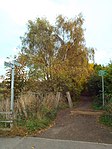WWT Washington

WWT Washington Wetland Centre is a wetland reserve managed by the Wildfowl and Wetlands Trust at Washington, Tyne and Wear, North East England. Established in 1975, its wildlife includes swans, geese, ducks, a family of Asian short clawed otters and a flock of Chilean flamingos. WWT works towards the conservation of wetlands and has a successful breeding program for some of the world's most endangered wildfowl. Included in the site is a nature reserve with hides to watch the wildlife, a saline lagoon and dragonfly ponds in which large species of dragonfly live along with newts, frogs and toads. The park sells bags of seed which can be used to get an up-close and personal encounter with most of their birds whilst feeding them. Species kept at the park include: Andean goose Baer's pochard Black necked swan Black swan Chilean flamingo Common crane Eider Hawaiian goose Mute swan Red-breasted goose Ringed teal Spur-winged goose White-faced whistling duck
Excerpt from the Wikipedia article WWT Washington (License: CC BY-SA 3.0, Authors, Images).WWT Washington
Wet Woodland, Sunderland
Geographical coordinates (GPS) Address Website Nearby Places Show on map
Geographical coordinates (GPS)
| Latitude | Longitude |
|---|---|
| N 54.899 ° | E -1.484 ° |
Address
Cygnus Observatory
Wet Woodland
NE38 8LE Sunderland
England, United Kingdom
Open on Google Maps








